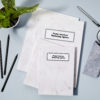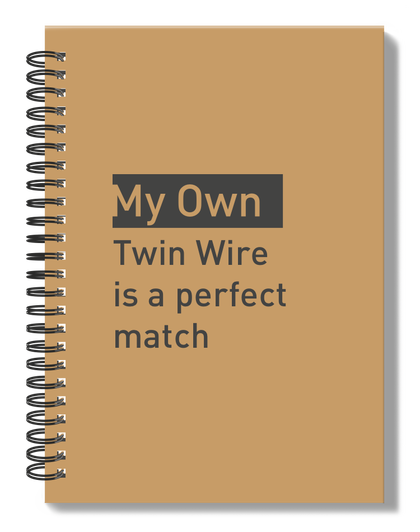Meshing digital and analogue systems in the workplace
Digitisation is rife across workplaces. More and more, offices turn to screens and automated systems, converting to them from clunky reams of folders and paper. It is not a bad thing, certainly, since digital systems offer organisation and speed which analogue ones can only dream of; for instance, it is much easier to pull up records from a centralised database whatever your location, rather than being there in person to dedicate hours to rifling through cabinets of (often mislabelled) documents.
Yet, from a low dip in 2011, sales of notebooks and letter pads in Britain alone have increased 57% in 2017. Why is that?
Does going analogue save you time?
It looks like an oxymoron at first glance, since the goal of digitisation is to save one time and money. However, with more and more programs requiring training and a steeper learning curve, sometimes it's easier and cheaper to go back to the basics - with pen and paper.
Of course, this is where the integration comes in. Certain tasks are simply easier when made analogue, and vice versa. Compiling a list of terms that needs to be easily searchable? A Word file with a Find function solves that easily. But it's far more intuitive and simple to draw out mind maps and ideas and jot down notes on a journal one can fit in a pocket or handbag.
A hybrid office that knows how to utilise different media for different tasks is more efficient than one that stubbornly chooses to go fully one way or the other.
Retain information better
Another reason to use journals, rather than laptops, to take notes is the idea that writing allows the human brain to absorb and process information. A study from 2014 noticed that students who took lecture notes on their computers performed worse than students who wrote down longhand notes, and, similarly, using notebooks during meetings is likely to result in better idea retention. Coupled with a break from time to time, this also leads to better and more creative problem solving amongst employees.
Company promotion
Another pro of having paper notebooks in the workplace is that it's so easily customisable - as opposed to laptops, which require expensive skins or decals. Offline corporate branding stays long after the computer is switched off, and, given that many people take notebooks everywhere in order to capture ideas as they come, customised notebooks are an efficient way of marketing outside of the office without paying extra for advertising. Just don't forget to add a memorable tagline and easy ways for your audience to reach you!
To find out more about branded notepads and how they can benefit your company, get in touch with us at My Own Stationery today.
Recent Articles
Hardback Book
Create customised covers for your hardback notebooks with My Own Stationery. Our hardback notebooks are available in casebound or wirebound, A4 & A5 sizes, with your choice of 8mm lined or blank pages for wirebound and 8mm lined for casebound, both with a high-gloss finish. Create your own unique cover by uploading your completed design, or design your front and back covers using our online design builder.
Softback Book
Our customisable cover softback notebooks are available in wirebound style, with a choice of sizes, number of pages, and either high-quality lined or blank paper. Depending on the type of book you choose, you have the option to upload your professional design or custom design the front & back cover in our online design builder.
Refill Pad
Customise an A4 Refill Pad cover with your own brand using our online design builder at My Own Stationery, choose between uploading a completed professional design or design your own using our online design builder. Our A4 Refill Pads are made with high-quality paper to ensure your design is as unique as your brand.





